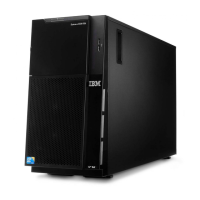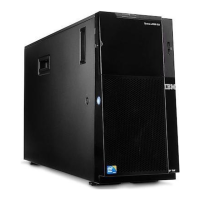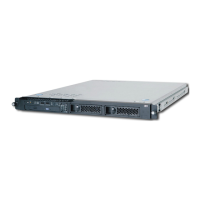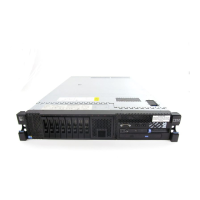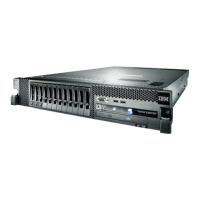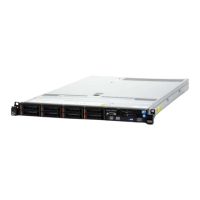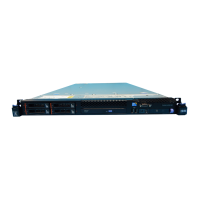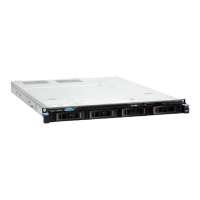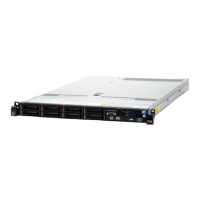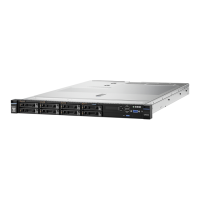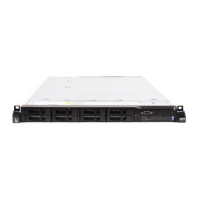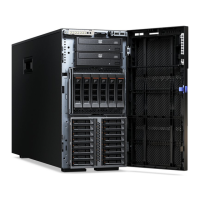
Do you have a question about the IBM System x3500 M2 Type 7839 and is the answer not in the manual?
| Memory | Up to 192 GB DDR3 |
|---|---|
| Network Interface | Dual Gigabit Ethernet |
| Form Factor | Tower |
| Processor | Intel Xeon 5500 series |
| Drive Bays | Up to 8x 3.5" SAS/SATA or 16x 2.5" SAS/SATA |
| Power Supply | 835W |
| Expansion Slots | 6 PCI-Express slots |
| Operating System Support | Microsoft Windows Server, Red Hat Enterprise Linux, SUSE Linux Enterprise Server |
| RAID Support | Integrated ServeRAID controller (various options available) |
Details on the IBM Documentation CD and its contents for server information.
Minimum hardware and software needed to use the IBM Documentation CD.
Instructions on how to navigate and view documents using the Documentation Browser.
Lists other documents that come with the server and their purpose.
Explanation of symbols and statements used in the manual for clarity and safety.
Summary of the server's features, capabilities, and technical specifications.
Details on the server's advanced technologies and features for enhanced performance.
Explains the server's RAS features ensuring data integrity and system uptime.
Overview of IBM Systems Director for managing physical and virtual systems.
Information on the UpdateXpress tool for installing device drivers and firmware updates.
Description of server controls, status LEDs, and power management features.
Illustration and identification of the major internal components of the server.
Diagrams showing internal connectors and switches on the system board.
Details on system board switches (SW6, SW5) and jumper settings for configuration.
Location and meaning of LEDs on the system board for diagnostics.
Overview of external input/output connectors and NMI button on the system board.
Illustration of connectors on the SAS backplanes for drive connectivity.
Description of LEDs and buttons on the front operator information panel.
Explanation of LEDs on the light path diagnostics panel for troubleshooting.
Important guidelines and precautions to follow before installing optional hardware.
Requirements for proper cooling and system reliability during operation.
Safety precautions and guidelines for working inside the server while it is powered on.
Precautions to prevent damage from static electricity when handling components.
Information on routing and connecting internal cables for drives and other devices.
Step-by-step instructions on how to open the server's front bezel.
Procedure for removing the left-side cover to access server components.
Instructions for opening the media door located on the front bezel.
Steps to remove the air baffle for access to internal components.
Steps to correctly install the air baffle for proper airflow management.
Procedure to open the power-supply cage for access to power supplies and DIMMs.
Steps to return the power-supply cage to its closed position.
Instructions for installing PCI and PCI Express adapter cards in the server.
Step-by-step guide for installing a DVD or optical drive in the server.
Procedure for installing USB or SATA tape drives into the server.
Instructions for installing hot-swap SAS/SATA hard disk drives in the server.
Guide for installing DIMMs into the server's memory slots.
Explanation of the independent channel mode for memory installation.
Details on enabling and using the memory-mirroring feature for reliability.
Procedure for installing a second microprocessor to enhance server performance.
Instructions for installing an optional second power supply and fans for redundancy.
Final steps required to complete the installation and assembly of server components.
Guidelines for connecting internal and external cables to the server and devices.
Steps to update the server configuration after adding or removing devices.
Guide to using the Setup utility for changing startup-device sequence and system settings.
How to use the Boot Selection Menu to temporarily override the startup sequence.
Procedure for using the backup copy of server firmware in case of primary firmware damage.
Information on using the ServerGuide CD for server setup and OS installation.
Overview of the features and functions offered by the ServerGuide program.
General steps and tasks involved when using the ServerGuide CD for server setup.
Description of a typical operating-system installation process using ServerGuide.
Steps to download instructions for installing the OS without using ServerGuide.
Details on the IMM's features for service processor, video, and remote management.
Explanation of remote viewing, keyboard/mouse access, and blue-screen capture functions.
Information on configuring the integrated Gigabit Ethernet controllers on the system board.
Guide to configuring integrated SAS/SATA controllers and managing RAID arrays.
Procedure for performing low-level formatting on a hard disk drive.
Steps to create RAID arrays using the LSI Configuration Utility or RAID properties.
Using ASU for modifying UEFI and IMM settings via command line.
Steps to take to try and solve problems before contacting IBM support.
How to find information within the system's documentation, including online resources.
Information on accessing IBM's web resources for up-to-date system information and support.
Lists IBM trademarks and registered trademarks.
Important notes regarding product usage, network connection, and performance factors.
Guidelines on limits for particulates and gases to prevent server damage.
Information regarding electronic emission compliance and notices.
FCC compliance statement for Class A digital devices and radio frequency energy.

